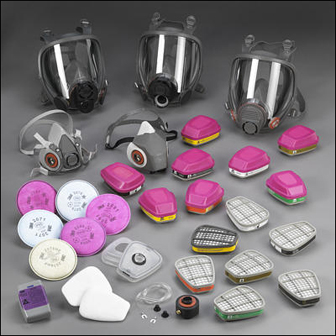Blog Information
- Posted By : cilonoh qaz
- Posted On : Oct 23, 2023
- Views : 223
- Category : General
- Description : Navigating OSHA Respirator Clearance and Fit Testing with Confidence
Overview

Respirators are essential personal protective equipment (PPE) in various industries, especially those where employees are exposed to airborne contaminants or hazardous substances. Ensuring that respirators fit properly and provide the necessary protection is crucial. The Occupational Safety and Health Administration (OSHA) mandates that employers conduct respirator clearance and fit testing to ensure the safety of workers. In this article, we will delve into the significance of respirator fit testing and clearance, as well as the steps to navigate these OSHA requirements with confidence.
The Importance of Proper Respirator Fit
Respirator fit is more than just a comfort issue; it can mean the difference between life and death in a hazardous environment. Properly fitting respirators create a seal that prevents harmful particles, gases, or vapors from entering the wearer's breathing zone. Inadequate fit can lead to exposure to contaminants, which can result in various health issues, from respiratory problems to long-term illnesses.
OSHA's Commitment to Worker Safety
OSHA, a federal agency responsible for regulating workplace safety and health, places a strong emphasis on protecting workers from respiratory hazards. To fulfill this commitment, OSHA has established specific standards for respirator fit testing and clearance. Compliance with these standards is not just a legal requirement; it is essential for preserving the well-being of employees.
Types of Respirators
Before delving into the specifics of fit testing, it's important to understand the types of respirators available. The two primary categories are:
Air-Purifying Respirators (APRs)
APRs work by removing contaminants from the air and typically include N95 masks. These respirators rely on filters or cartridges to trap particles and gases before they enter the respiratory system.
Atmosphere-Supplying Respirators
Atmosphere-supplying respirators provide a clean, breathable air supply to the wearer. This category includes supplied-air respirators (SARs) and self-contained breathing apparatus (SCBA).
Respirator Fit Testing
Respirator fit testing is the process of evaluating how well a respirator seals to the face of the wearer. There are two main types of fit testing methods:
Qualitative Fit Testing
Qualitative fit testing is a pass/fail method that relies on the wearer's subjective response. It includes methods like the irritant smoke, saccharin, and Bitrex tests. The wearer is exposed to a test agent, and if they can detect its taste, smell, or irritation, the fit is considered inadequate.
Quantitative Fit Testing
Quantitative fit testing involves measuring the actual amount of leakage into the respirator. This method uses specialized equipment to calculate the fit factor, providing a more objective assessment.
Respirator Clearance
Respirator clearance is a medical evaluation to determine if an employee is fit to wear a respirator. This evaluation is particularly crucial for employees who have never worn a respirator before or who have experienced changes in their health or medical conditions. Respirator clearance is a proactive measure that ensures the employee's safety and health when using respiratory protection.
Navigating OSHA Requirements
Ensuring compliance with OSHA regulations regarding respirator fit testing and clearance can be a complex process. Employers and safety professionals should follow these steps with confidence:
1. Assess Respirator Needs
Identify the potential respiratory hazards in the workplace and select the appropriate respirators. Ensure that respirator selection considers the specific needs and comfort of the employees.
2. Conduct Medical Evaluations
Arrange for medical evaluations for all employees required to wear respirators. This process includes a medical questionnaire and a physical examination, which must be performed by a qualified healthcare professional.
3. Perform Fit Testing
Utilize the chosen fit testing method (qualitative or quantitative) to evaluate the respirator's seal for each employee. Maintain meticulous records of the testing results.
4. Implement a Respirator Program
Establish a comprehensive respiratory protection program that outlines procedures for respirator use, maintenance, cleaning, and storage. Train employees on proper respirator use and care.
5. Review and Revise as Necessary
Regularly review the respiratory protection program to ensure it remains up-to-date and effective. Revise the program as needed based on changes in workplace hazards, respirator types, or employee health status.
Conclusion
Respirator fit testing and clearance are essential components of workplace safety, particularly in industries where exposure to hazardous substances is a concern. By understanding the importance of these measures and navigating OSHA requirements with confidence, employers can protect their workers from respiratory hazards and promote a safer, healthier workplace. Prioritizing respirator fit and clearance not only complies with legal mandates but also reflects a commitment to safeguarding the well-being of employees.
